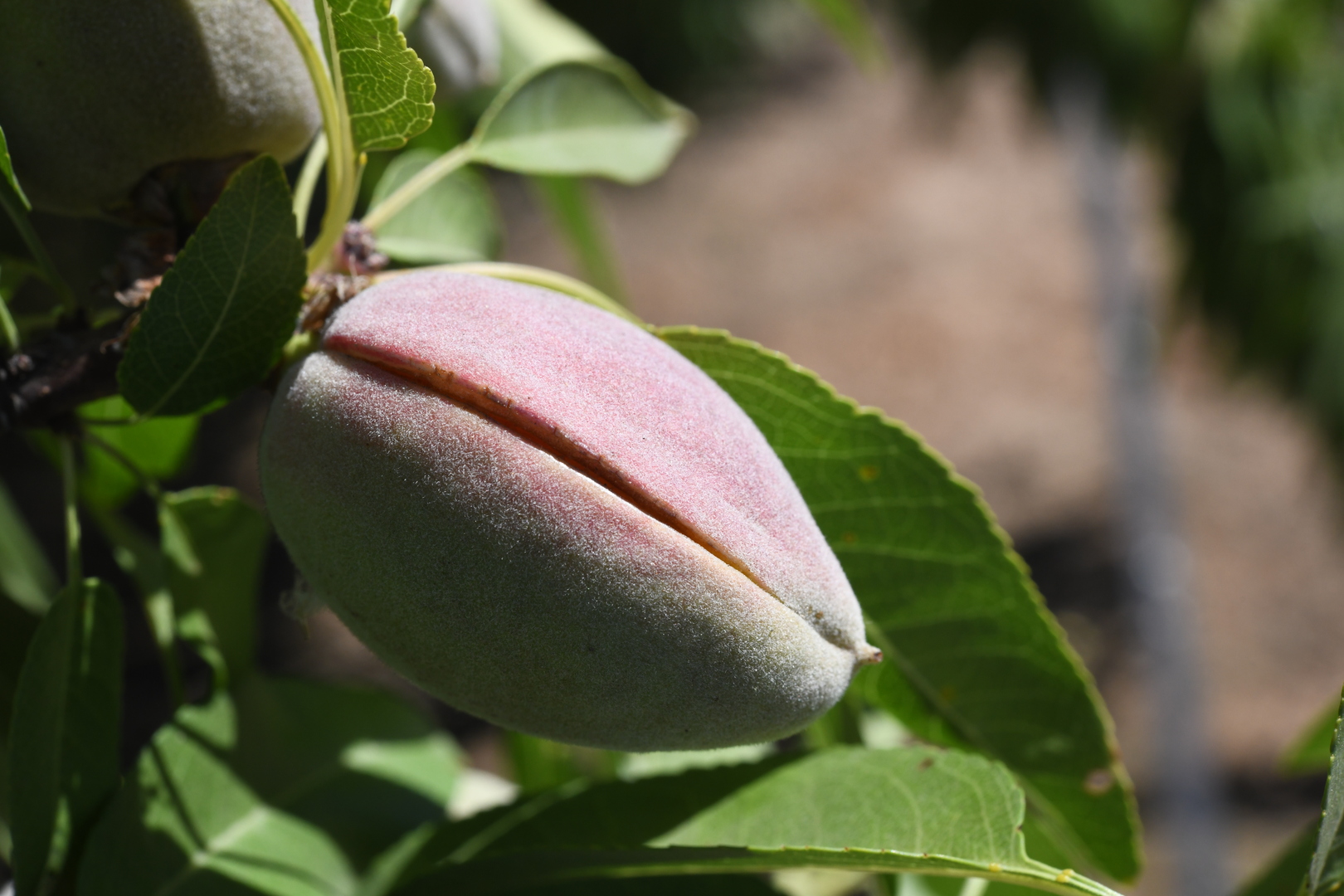


With almond hull split upon us, now is the time to make applications to protect this season’s crop from navel orangeworm (NOW) damage. What's in your sprayable toolkit?
Before hull split, navel orangeworm infestations primarily occur on mummy nuts. The current season’s crop becomes highly susceptible to navel orangeworm damage after hull split. When almond hulls split, they release volatiles that attract gravid females to the nuts, where she will lay her eggs. Newly emerged larvae enter the shell and feed on the kernel, causing significant damage and increasing the risk of aflatoxin contamination.
Hull split is not an immediate process, occurring over a period of weeks leading up to harvest. Suterra’s Dr. Emily Symmes explains the challenges associated with hull split insecticide applications. “As the hull opens more each day, increased surface areas of the interior of the hull and the shell are exposed, and these newly exposed tissues are not protected by the insecticide residue. Female NOW moths are adept at positioning their ovipositors (egg-laying ‘tube’) to deposit eggs as close to the larval resource as possible, often avoiding the plant tissues covered with insecticide. In this case, the larvae will not die and will enter the kernel resulting in crop damage.”
When using selective insecticides at hull split, spray timing is critical to target the early-stage larvae when they are small and most vulnerable and before they have entered the protected environment of the almond shell. Effective hull split sprays should attempt to thoroughly cover all exposed parts of the hull and shell to maximize the likelihood that the larva will contact the insecticide residue as it attempts to make its way into the kernel.
To maximize crop protection between hull split and Nonpareil harvest, many operations choose to apply two hull split sprays (typically 2 to 3 weeks apart) to keep insecticide residues on as much of the exposed plant tissue as possible. Because of these challenges, the industry consensus is that even the most optimized hull split insecticide sprays (proper timing and adequate coverage at the time of application) each provide 50% efficacy at best.
What is available in the sprayable toolkit for NOW?
Hull split timing can be predicted using full bloom timing paired with temperature data, which may help growers and their pest control advisers plan their spray timing(s). It is important always to confirm hull split model predictions with in-field observations of hull split in each block. “Every year is different when it comes to the onset and duration of hull split, which can present challenges with optimal insecticide timing to achieve the desired efficacy. This is why integrating the unique, non-target mode of action and long residual activity of sprayable pheromones into the program adds significant value,” according to Dr. Emily Symmes.
While often an important tool for helping protect the crop, insecticide sprays alone may not be sufficient to achieve the industry standards for low navel orangeworm damage. CheckMate(R) NOW-F provides the industry with another proven effective method of mating disruption to complement or augment the insecticide program.
Suterra’s proprietary microencapsulated CheckMate® formulations are engineered to release pheromone for a period of up to 4 weeks following hull split application(s) (note that longer residual activity of up to 8 weeks following “mummy” spray applications is commonly observed). Unlike most insecticides, contact with or ingestion by the target pest is not required, meaning that full coverage is not necessary for efficacy. In addition, the long residual activity does not require the precision timing of selective pesticides.
“Because the mode of action is mating disruption, we only need to get uniform distribution of CheckMate® NOW-F into the orchard environment. Each microcapsule acts as a microscopic pheromone dispenser, and once the active ingredient is released and becomes airborne, it will contact the male antenna to inhibit his ability to find females to mate with,” explains Dr. Emily Symmes.
CheckMate® NOW-F sprayable mating disruption is tank-mixable with most common agrochemicals and has zero pre-harvest interval, allowing growers the flexibility to add sprayable pheromones to existing programs and protect the crop up to harvest of each variety and beyond.
There are many versatile approaches to incorporating sprayable mating disruption into your navel orangeworm IPM program, and our technical team is happy to help. Contact us here and we will connect you with a Suterra expert in your area.
This article is focused on the use of CheckMate® NOW-F during the hull split period. It is not meant to recommend a specific spray program (number of sprays, spray timings). Like any sprayable pest management input, the number of CheckMate® NOW-F applications, spray timings, and application methods should be decided in consultation between growers and their crop advisers. Always adhere to state and local regulations and the current pesticide label and check with your organic certifier as applicable.